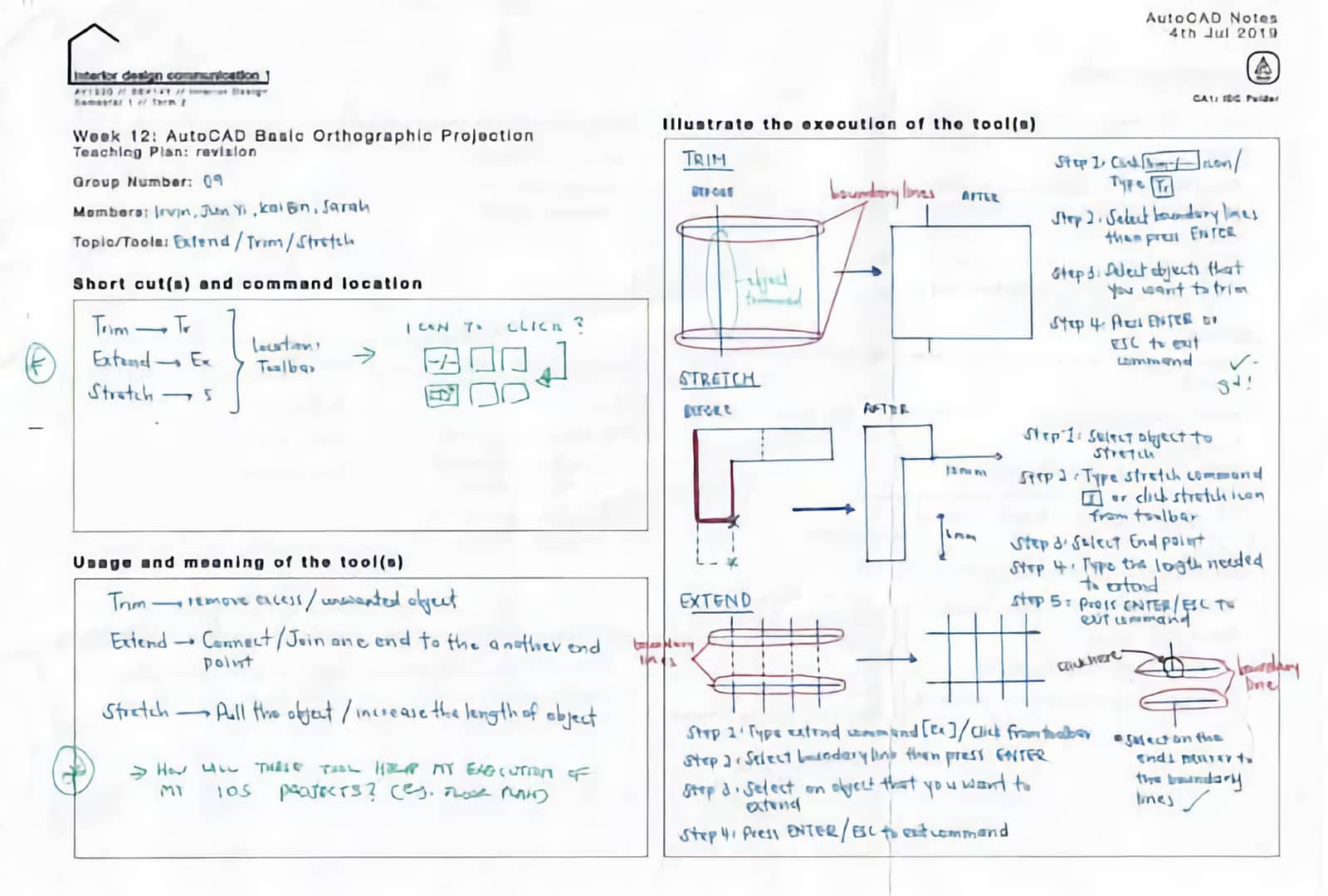Peer-to-Peer Learning Enhances Students’ Self-Directed Learning with Disparate Knowledge Background in CAD
Downloads
DOI:
10.31182/cubic.2021.4.038Keywords:
self-directed learning, peer-to-peer learning, computer-aided design, peer teaching, peer tutoringAbstract
This paper explores how Peer-to-Peer learning can level-up students' understanding of computer-aided design (CAD) with Autodesk Auto- CAD programme for Interior Design Year 1 students. As students come from different knowledge backgrounds, they approach the module with different understanding levels, with the weaker students unable to follow the live demonstration tutorials. A peer tutoring assignment using a student-led peer-to-peer learning pedagogy, was introduced to advance students' understanding and internalise content better by reinforcing their learning. Each group has an equal proportion of students with different levels of knowledge and capabilities, and each group member conducted self-research on a topic segment, shared their knowledge and findings within their group, and thereafter curated a 15-minute lecture and facilitation workshop for peers. Tutors provided consultation and mediation, encouraging students’ participation. The assignment’s results showed that the peer-to-peer learning approach efficaciously empowered students and motivated learning, enabling them to be self-directed learners.
How to Cite
Published
Issue
Section
References
Beasley, Colin. 1997. "Students as teachers: The benefits of peer tutoring." Paper presentation at the Learning Through Teaching Conference, Monash University, February (1997). https://clt.curtin.edu.au/events/conferences/tlf/tlf1997/contents.html
Choi, Youngeun. , Jakob, Susanne and William. J. Anderson. "Active Learning: Developing Self-Directed Learners Through Strong Intellectual Engagement.” CourseSource 4 (2017). https://doi.org/10.24918/ cs.2017.20. DOI: https://doi.org/10.24918/cs.2017.20
Colvin, Janet W. "Peer tutoring and social dynamics in higher education." Mentoring & Tutoring: Partnership in Learning 15, no. 2 (2007): 165-181. DOI: https://doi.org/10.1080/13611260601086345
Demirbas, O. Osman, and Halime Demirkan. "Learning styles of design students and the relationship of academic performance and gender in design education." Learning and Instruction 17, no. 3 (2007): 345-359. DOI: https://doi.org/10.1016/j.learninstruc.2007.02.007
Eggers, Janie E. "Pause. prompt and praise: cross-age tutoring." Teaching Children Mathematics 2, no. 4 (2 009): 216-219. DOI: https://doi.org/10.5951/TCM.2.4.0216
Gibbons, Maurice. The self-directed learning handbook: Challenging Adolescent Students to Excel. Hoboken, NJ: John Wiley & Sons, 2003.
Hott, Brittany, Jennifer Walker, and Jasneen Sahni. "Peer tutoring." W: Council of Learning Disabilities. Pobrane 7 (2012).
Immerwahr, John. "Engaging the ‘thumb generation’ with clickers." Teaching Philosophy 32, no. 3 (2009): 233-245. DOI: https://doi.org/10.5840/teachphil200932326
Jain, Aman. "Don't teach me, let me learn! Millennial learning." Indore Management Journal 8, no. 1 (2015): 59.
Kharusi, Dhafra Al. "What Positive Impacts Does Peer tutoring Have Upon the Peer Tutors at SQU." Journal of Education and Practice 7, no. 27 (2016): 115-127.
Knowles, Malcolm S. Self-directed learning: A guide for learners and teachers. (1975).
Meister, Jeanne C., and Karie Willyerd. “Mentoring Millennials.”Harvard Business Review 88, no. 5 (2010): 68.
Michaelsen, Larry, and Boyd Richards. "Commentary: drawing conclusions from the team-learning literature in health-sciences education: a commentary." Teaching and learning in Medicine 17, no. 1 (2005): 85-88. DOI: https://doi.org/10.1207/s15328015tlm1701_15
Rashid, Tabassum, and Hanan Muhammad Asghar. "Technology use, self-directed learning, student engagement and academic performance: Examining the interrelations." Computers in Human Behavior 63, (2016): 604-612. DOI: https://doi.org/10.1016/j.chb.2016.05.084
Sefton-Green, Julian. Report 7: Literature Review in Informal Learning with Technology Outside School. Future Lab, Bristol (2004): 5-9.
Tan, L. and Koh, J. Self-Directed Learning: Learning In The 21St Century. 1st ed. [ebook] Singapore, (2015): 11-15. Available at: <https://www.researchgate.net/publication/285591239_Self-Directed_Learning_Learning_in_the_21st_Century> [Accessed 5 March 2020].
Tan, Seng Chee, and Shen-Hsing Annabel Chen, eds. Transforming Teaching and Learning in Higher Education: A Chronicle of Research and Development in a Singaporean Context. Springer Nature, (2020). DOI: https://doi.org/10.1007/978-981-15-4980-9
Topping, Keith. Peer-assisted learning. Edited by Steward Ehly. Milton Park, UK: Routledge, (1998). DOI: https://doi.org/10.4324/9781410603678


